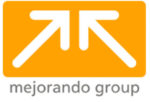By Patrick Ibarra The Mejorando Group
Are you changing as fast as the world around us? Talent drives success, but the talent practices many governments use are vestiges of another era. They were designed for predictable environments, traditional ways of getting work done, and organizations where lines and boxes defined how people were managed. Modern leaders recognize that talent selection decisions are an increasingly important determinant of organizational performance and success. Those organizations that attract and retain the right kind of talent and treat it, reward it, develop it, and deploy it correctly, perform better than those that simply fill jobs with people.
Every organization is perfectly designed to get the results it gets so whatever you’re achieving, you’re doing on purpose. Want a better outcome, then look internally at your organization but likely it’s not about bigger budgets, newer technology, and larger facilities but is instead is about your people. To achieve and sustain success you need more than just people though, you need talented people who everyday arrive at work wanting to go above and beyond.
My question to you is what are you doing intentionally to attract, retain and optimize the talent you need to build a stronger community?
Improving (or simply maintaining) workforce productivity requires you to accept that the work environment has changed, and your approach to talent management must change as well. Talent management has become one of the most pressing topics in organizations and its long overdue for the public-sector to transition its mindset from employees to talent. Your organization’s talent is not just employees who are expected to do a job (or for that matter, a role). Talent comprises individuals who differ in what they can do and can learn, and what they want to do. To be effective, you need to manage talent in ways that makes it a major contributor to your organization’s success.
What is Talent Management you ask? According to IPMA-HR, “Talent Management is a systematic approach to performance excellence achieved by creating a culture of continuous improvement, high engagement, workforce capability and capacity through integrated talent strategies and learning and development programs that are aligned with the agency mission, vision, and core values. Talent Management requires that organizations recruit, retain, and reward top talent and match the right people with the right roles to support the overall organization’s mission and vision.”
Organizations with winning employee value propositions had a compelling answer to the following questions:
- Why would a talented person want to join our organization and stay with us?
- Why would a talented person be reluctant to join our organization and stay with us?
- What are a few action steps that we need to take in order to enhance our Employee Value Proposition?
The 21st century answer to these questions have to be way more than pay and benefits, way more!
To create such a proposition, a great organization tailors its brand and products—that is, the jobs it has to offer—to appeal to people from all generations. Top performers care deeply about values and culture, freedom and autonomy, challenging jobs, and good management. In short, people don’t want just a job, they want meaning and local government is in the meaning business!
Talent selection decisions are an increasingly important determinant of organizational performance and success. For many organizations, they are the most mission-critical decisions they make. It is not new that selection decisions are crucial. What is new is their growing significance as a result of human capital becoming a more critical determinant of organizational effectiveness.
Most government organizations still use a job-based bureaucratic talent management approach that does not align with today’s world of work and workers, and oh by the way, won’t fit tomorrow’s either. Recent research on talent management show the five talent management imperatives successful organizations execute:
- Instill a
talent mindset at all levels of the organization, beginning with senior
leaders.
- Having the “right” talent throughout the organization is a critical source of our success.
- Every manager is responsible for attracting, developing, and retaining talented people.
- Every manager is explicitly accountable for the strength of the talent pool they build.
- Create a
winning employee value proposition that brings scarce talent through the doors
and keeps it there. The components of the proposition are exciting work, a
great organization, wealth and reward, and growth and development.
- We think of our people as partners and volunteers and realize we have to deliver on their dreams if we are to keep them.
- We have a distinctive employee value proposition that attracts and retains talented people.
- Our people feel good about their work experience.
- Recruit
talent continuously.
- Think like a “marketer” and in government it’s referred to as social marketing. Using social media channels communicate your brand to attract top performers.
- Recruitment is a key responsibility of all managers.
- Grow leaders.
- Development happens through a series of job experiences, and helpful coaching and mentoring.
- Development is essential to performance and retention.
- Training, I mean learning, is targeted to strengthen the internal bench of potential successors.
- Differentiate
and affirm.
- We highlight our top performers with opportunities and recognition.
- We develop and nurture mid-performers.
- We help our lower performers raise their game or make other decisions.
We have partnered with a number of public-sector leaders to help them reset their Talent Management Strategy so heir workforce members can accelerate their journey to, in the spirit of Mejorando, “get better all the time.” Please contact me at patrick@gettingbetterallthetime.com so we can share how we can help you and your workforce.


